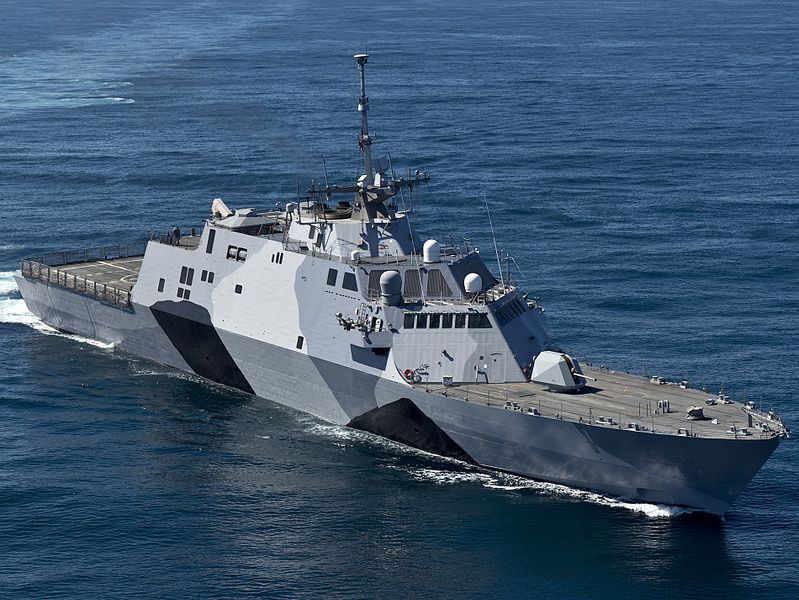 USS Freedom (LCS-1) shows off her camouflage scheme on sea trials in February 2013 prior her first deployment to the Asia-Pacific region. U.S. Navy Photo USS Freedom (LCS-1) shows off her camouflage scheme on sea trials in February 2013 prior her first deployment to the Asia-Pacific region. U.S. Navy PhotoJan. 16 (Bloomberg) — The Pentagon has given the U.S. Navy preliminary instructions to buy 32 of its troubled Littoral Combat Ships instead of the 52 previously planned, according to defense officials. The directive to scrap 20 of the planned ships came in a Jan. 6 memo from Acting Deputy Defense Secretary Christine Fox to the Navy that could be overturned or modified before the final budget proposal for fiscal 2015 is released, according to the officials, who asked not to be identified before an announcement. The program to build 52 ships by 2026, in two versions made by Lockheed Martin Corp. and Austal Ltd., has faced an expanding list of questions about the vessels’ manning, mission, firepower, defenses and survivability, even as costs have soared amid Pentagon budget cuts. The total cost to develop and build the ships intended for use in shallow coastal waters is currently projected at $32 billion. Fox’s memo asked the Navy to plan for reduced budgets for 2016 and beyond under a continuation of the automatic cuts known as sequestration, with one sentence providing the directive on the Littoral Combat Ship. The Navy is scheduled to meet today with top Defense Department officials to discuss the order and other budget decisions, one of the officials said. Lockheed, Austal One version of the ship, with a traditional steel hull, is being built by Bethesda, Maryland-based Lockheed. The second version, an aluminum trimaran, or three-hulled vessel, is being made by a group led by Austal, based in Henderson, Australia. The Government Accountability Office, the investigative arm of Congress, advised the Navy last year to slow construction to allow for further testing. As recently as July, the Navy rejected that recommendation, saying it could resolve any testing issues while construction proceeded on schedule. “We realize that these may be some rough waters,” Rear Admiral Thomas Rowden, the Navy’s director of surface warfare, said during a July 23 conference call with reporters. “I’m confident we’ll be able to address these issues and get this significant capability to the fleet.” Rowden said the ships are needed “to deliver key capabilities in the littorals,” or coastal waters. By the end of fiscal 2015, the Navy planned to purchase the first 24 of the ships. Funding for the next installment of 28 was to commence in the fiscal 2016 budget, according to Navy budget documents. The directive to build fewer ships was reported earlier yesterday by Navy Times. Confidential Report A confidential Navy report in 2012 warned that the ships may not be able to perform their missions because they’re too lightly manned and armed. A congressional audit last year found the ship lacks the robust communications systems needed to transmit critical data to support facilities on shore. The commander of naval surface forces, Vice Admiral Tom Copeman, later criticized the ship in a November 2012 memo, saying it lacks the firepower it needs and called on the Navy to consider a ship with more offensive capability. Copeman, in his memo to Chief of Naval Operations Admiral Jonathan Greenert, wrote the service should “re-evaluate the next” batch of vessels and “seriously consider moving to a completely different type of ship after the current contracted ships are built.” Copyright 2014 Bloomberg. |
↧
Pentagon to Cut U.S. Navy Littoral Combat Ship Order by 20
↧









